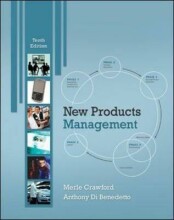Summary: International Financial Management
- This + 400k other summaries
- A unique study and practice tool
- Never study anything twice again
- Get the grades you hope for
- 100% sure, 100% understanding
Read the summary and the most important questions on International Financial Management
-
Week 1: Worldwide Accounting Diversity & Analysis of Foreign Financial Statements (Chapters 1&2)
This is a preview. There are 50 more flashcards available for chapter 22/12/2015
Show more cards here -
What are the 10 main categorical differences between Local and U.S. GAAP?
1. inventory 2. Revaluation of Property, Plant and Equipment 3. Capitalization of Interest on Property, Plant, and Equipment 4. Deferred Charges 5. Sale of Land 6. Government Grants 7. Restructuring Costs 8. Derivative Financial Instruments 9. Employee Share Trust Arrangements 10. Ordinary Dividends -
Week 2: Additional Financial Reporting Issues
This is a preview. There are 27 more flashcards available for chapter 26/12/2015
Show more cards here -
Inflation accounting is mostly important for countries that suffer from a lot of inflation, else it is not (really) needed. True or false?
True. -
What are the rules for the equity method?
Equity method is based on the value of investment and the % of ownership. Specifically when the ownership is 50% > ownership > 20%.
Companies do not have effective control, but have significant influence over an investee, the investee is called “Associate” not subsidiary (powerpoint lecture 2). -
Week 3: International Transfer Pricing
This is a preview. There are 37 more flashcards available for chapter 29/12/2015
Show more cards here -
Read the example on page 157 how the profit split method can be applied to determine the licenses of intangible products.
I read it and I understand when this method needs to be applied. -
Week 4: Strategic Accounting Issues in Multinational Corporations and International Corporate Social Reporting
This is a preview. There are 42 more flashcards available for chapter 30/12/2015
Show more cards here -
How do you formulate a strategy and what factors are important?
Information is the key to strategy formulation. Formulating a strategy involves analyzing information about both internal and external factors. Internal factors relate to the levels of skills and know-how available within the organization in such areas as technology, manufacturing, marketing, and distribution, and the culture within the organization, whereas external factors relate to the competitors, customers, and suppliers, as well as the other regulatory, social, and political factors. The analysis of these factors allows managers to identify opportunities and match them with available resources to determine strategies (176). -
When you are translating currency, when do you include the translation adjustment in the measurement of profit?
If both of the following questions can be answered with a yes: (1). Does the translation adjustment accurately reflect the impact on parent currency cash flows resulting from a change in the exchange rate? (2) Does the foreign operation manager have authority to hedge his or her translation exposure? (206-207). -
Week 5: The Market for Foreign Exchange, Int. Parity Relationship, Int. Capital Markets and the Cost of Capital
This is a preview. There are 58 more flashcards available for chapter 31/12/2015
Show more cards here -
What is the Foreign Exchange (FX) market?
The foreign exchange (FX) market encompasses the conversion of purchasing power from one currency into another, bank deposits of foreign currency, the extension of credit denominated in foreign currency, foreign trade financing, trading in foreign currency options and future contracts, and currency swaps (287). -
What is the spot market?
The spot market involves almost the immediate purchase or sale of foreign exchange. Typically, cash settlement is made around one or two business days (292). -
What is a cross-exchange rate?
A cross-exchange rate is an exchange rate between a currency pair where neither currency is the U.S. dollar. The cross-exchange rate can be calculated from the U.S. dollar exchange rates for the two currencies, using either European or American term quotations (297). -
When does a currency depreciate and appreciate?
If the currency is selling at a premium it depreciates and if it is selling at a discount it is appreciating (or becomes more valuable) in the future
- Higher grades + faster learning
- Never study anything twice
- 100% sure, 100% understanding
































